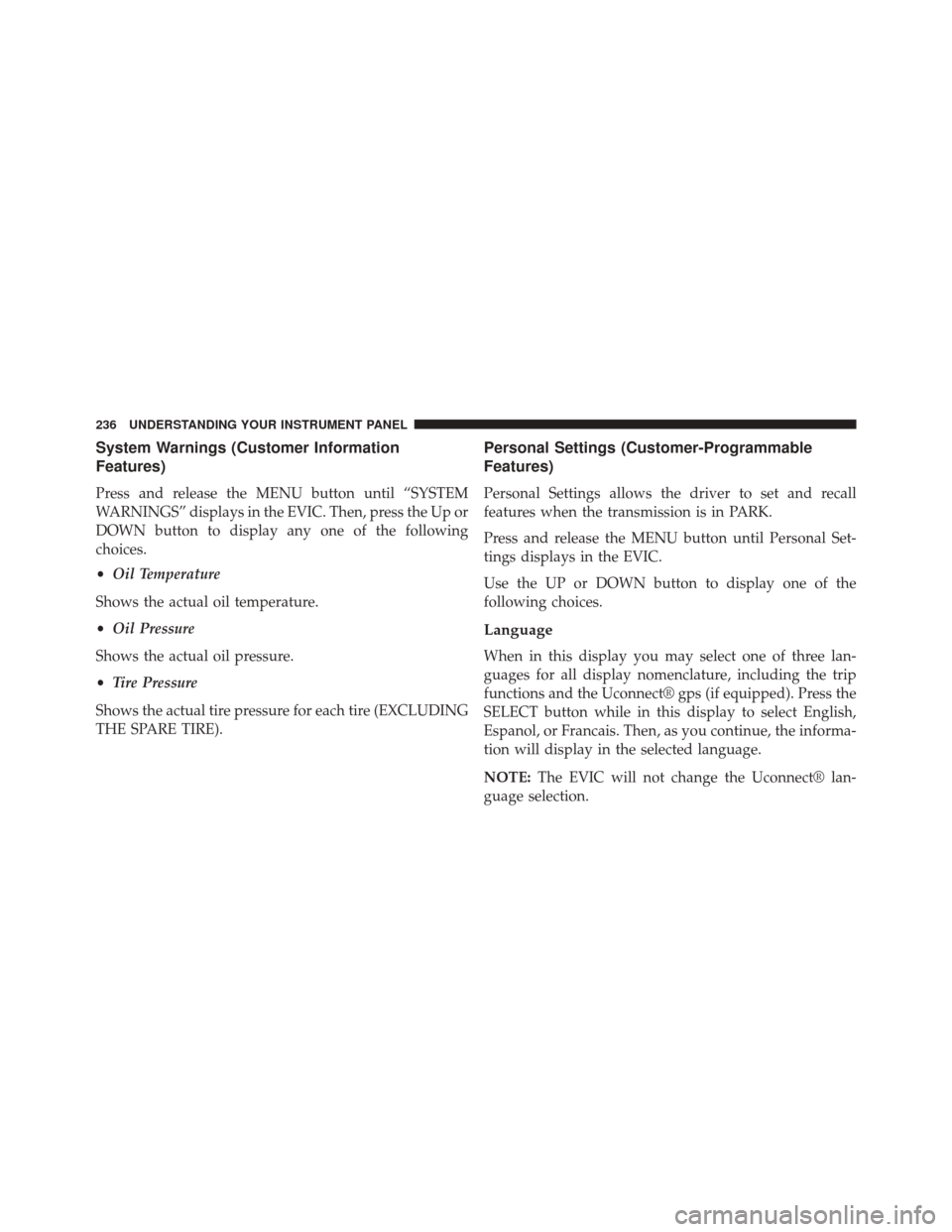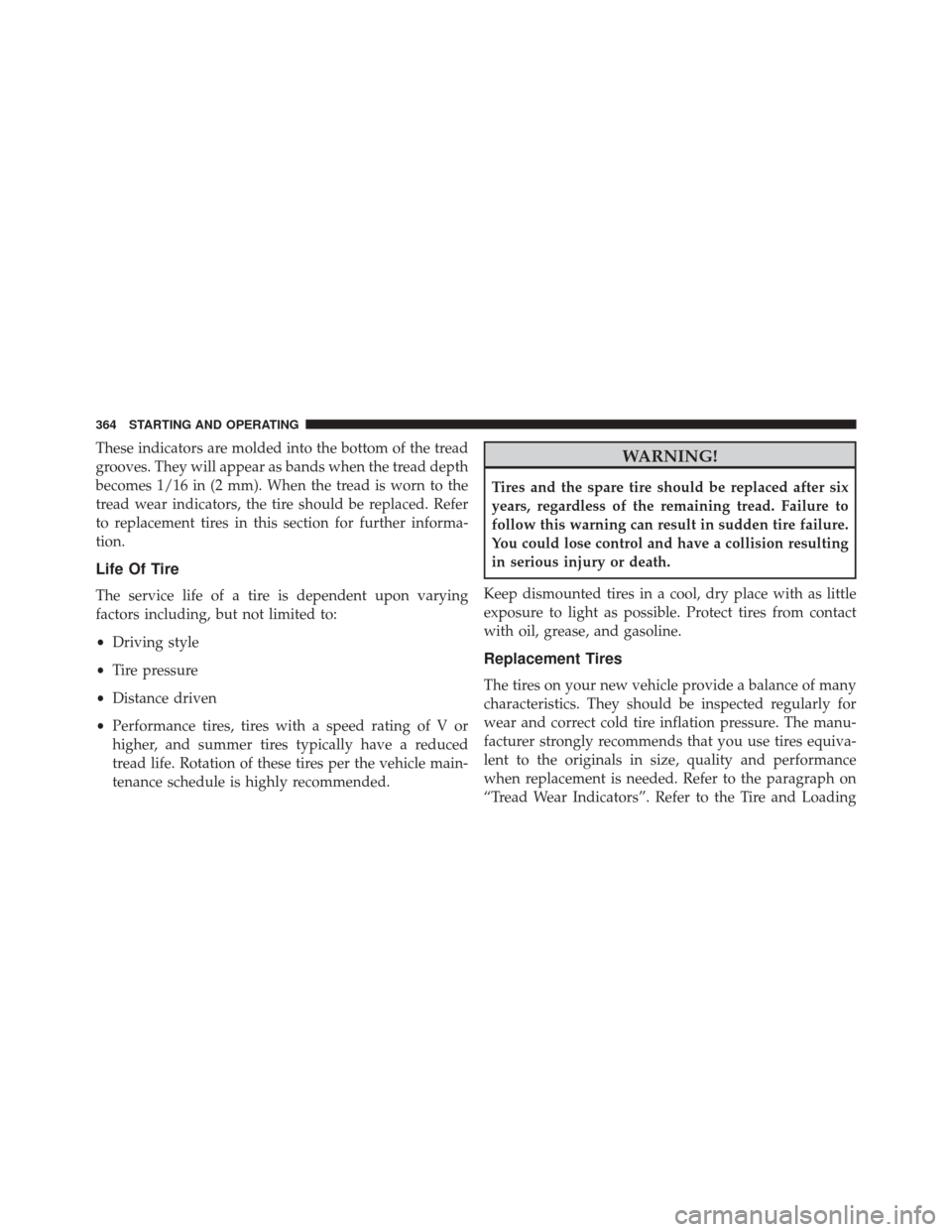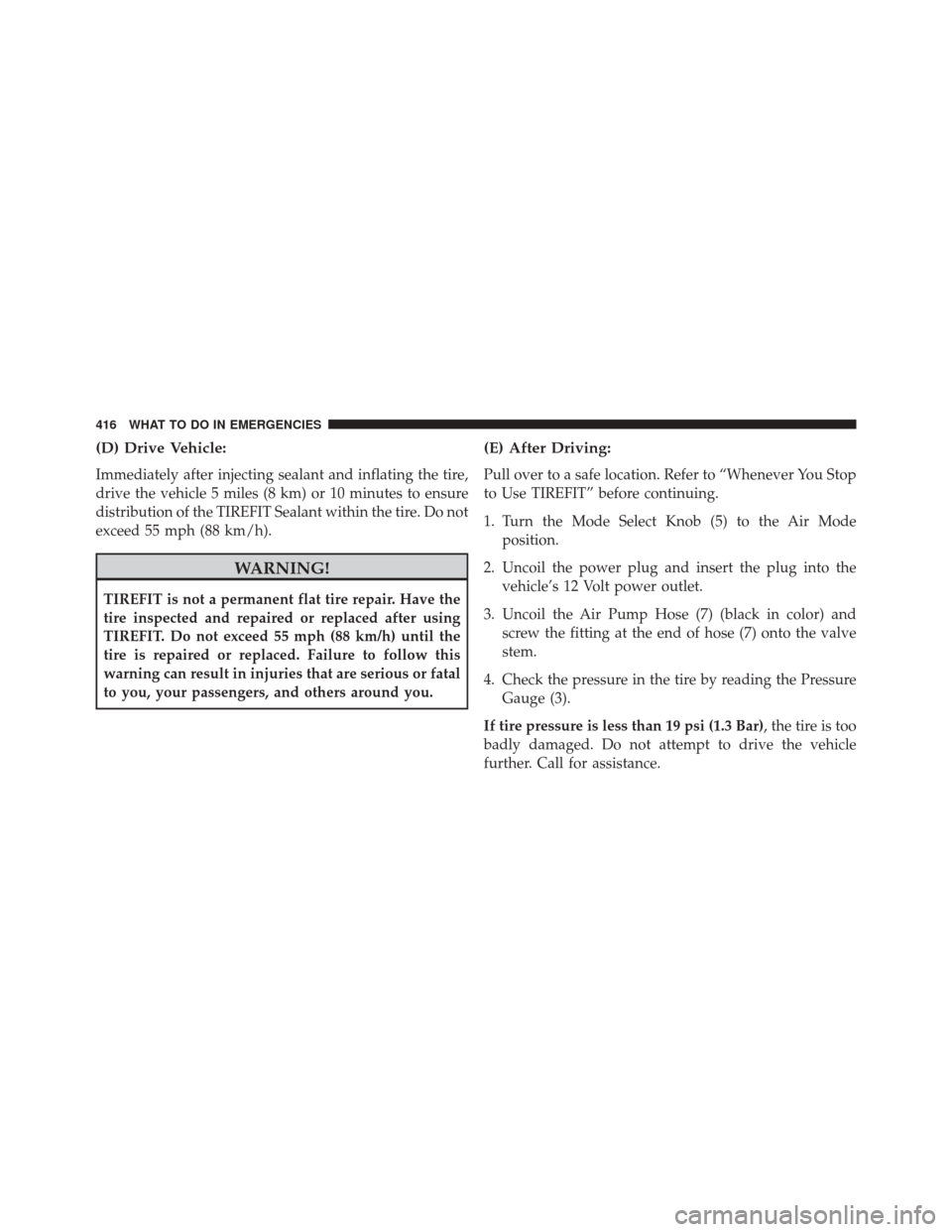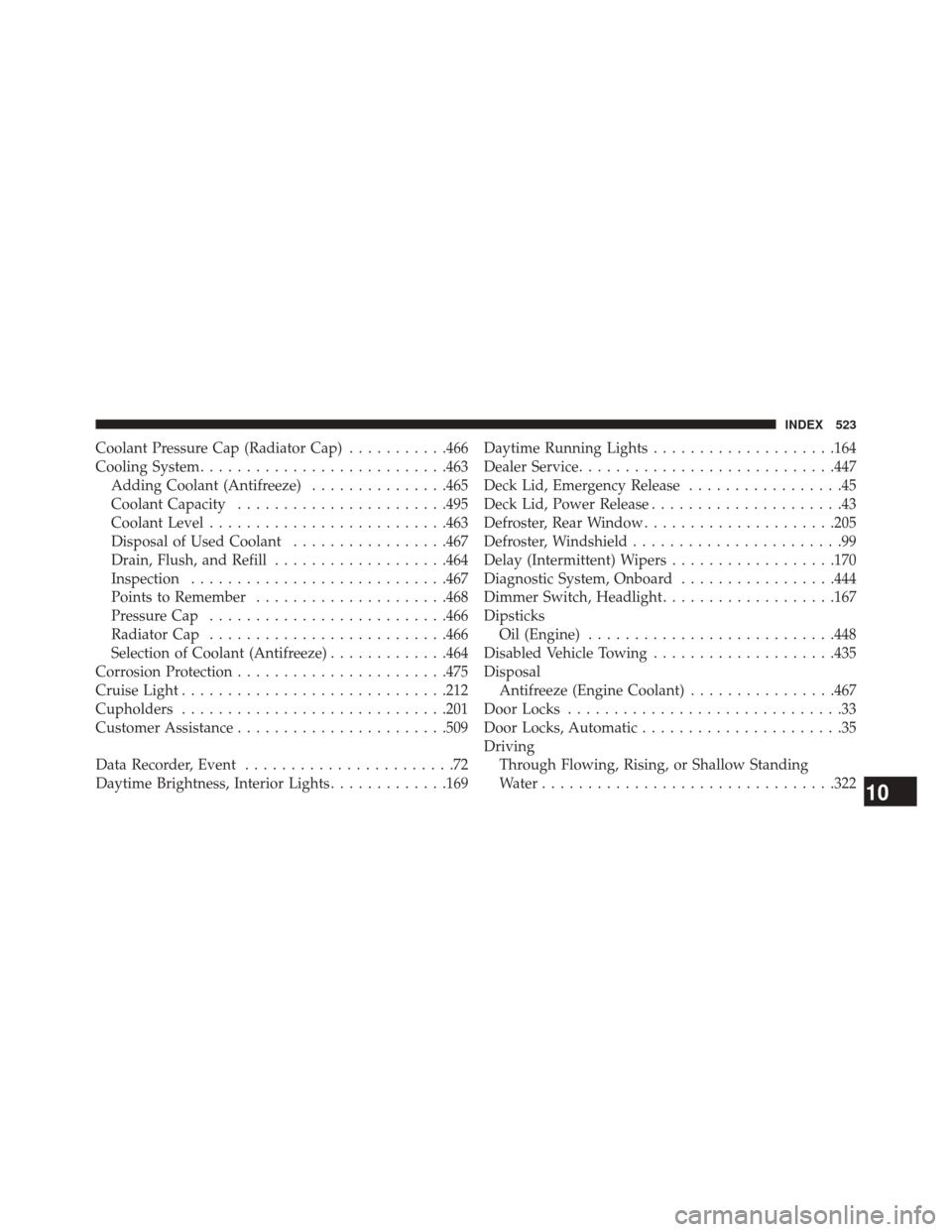2013 DODGE CHALLENGER low oil pressure
[x] Cancel search: low oil pressurePage 216 of 543

Also, have the system checked by an authorized dealer if
the light does not come on during starting.
8. Temperature Gauge
The temperature gauge shows engine coolant tempera-
ture. Any reading within the normal range indicates that
the engine cooling system is operating satisfactorily.
The gauge pointer will likely indicate a higher tempera-
ture when driving in hot weather, up mountain grades,
or when towing a trailer. It should not be allowed to
exceed the upper limits of the normal operating range.
CAUTION!
Driving with a hot engine cooling system could
damage your vehicle. If the temperature gauge reads
“H,” pull over and stop the vehicle. Idle the vehicle
with the air conditioner turned off until the pointer
(Continued)
CAUTION!(Continued)
drops back into the normal range. If the pointer
remains on the “H,” and you hear a chime, turn the
engine OFF immediately and call for service.
WARNING!
A hot engine cooling system is dangerous. You or
others could be badly burned by steam or boiling
coolant. You may want to call a service center if your
vehicle overheats. If you decide to look under the
hood yourself, refer to “Maintaining Your Vehicle”
and follow the warnings under the Cooling System
Pressure Cap paragraph.
9. Turn Signal Indicators The arrow will flash with the exterior turn signal
when the turn signal lever is operated.
214 UNDERSTANDING YOUR INSTRUMENT PANEL
Page 219 of 543

13. Electronic Stability Control (ESC) OFF Indicator
Light — If EquippedThis light indicates the Electronic Stability Con-
trol (ESC) is off.
14. Oil Pressure Warning Light This light indicates low engine oil pressure. The
light should turn on momentarily when the engine is
started. If the light turns on while driving, stop the
vehicle and shut off the engine as soon as possible. A
chime will sound when this light turns on.
Do not operate the vehicle until the cause is corrected.
This light does not indicate how much oil is in the engine.
The engine oil level must be checked under the hood. 15. High Beam Indicator
This indicator will turn on when the high beam
headlights are on. Push the multifunction lever
away from the steering wheel to switch the headlights to
high beam.
16. Seat Belt Reminder Light
This light will turn on for four to eight seconds as
a bulb check when the ignition switch is first
placed in ON/RUN. A chime will sound if the
driver’s seat belt is unbuckled during the bulb check. The
Seat Belt Warning Light will flash or remain on continu-
ously if the driver’s seat belt remains unbuckled after the
bulb check or when driving. Refer to “Occupant Re-
straints” in “Things To Know Before Starting Your Ve-
hicle” for further information.
4
UNDERSTANDING YOUR INSTRUMENT PANEL 217
Page 238 of 543

System Warnings (Customer Information
Features)
Press and release the MENU button until “SYSTEM
WARNINGS” displays in the EVIC. Then, press the Up or
DOWN button to display any one of the following
choices.
•Oil Temperature
Shows the actual oil temperature.
• Oil Pressure
Shows the actual oil pressure.
• Tire Pressure
Shows the actual tire pressure for each tire (EXCLUDING
THE SPARE TIRE).
Personal Settings (Customer-Programmable
Features)
Personal Settings allows the driver to set and recall
features when the transmission is in PARK.
Press and release the MENU button until Personal Set-
tings displays in the EVIC.
Use the UP or DOWN button to display one of the
following choices.
Language
When in this display you may select one of three lan-
guages for all display nomenclature, including the trip
functions and the Uconnect® gps (if equipped). Press the
SELECT button while in this display to select English,
Espanol, or Francais. Then, as you continue, the informa-
tion will display in the selected language.
NOTE: The EVIC will not change the Uconnect® lan-
guage selection.
236 UNDERSTANDING YOUR INSTRUMENT PANEL
Page 366 of 543

These indicators are molded into the bottom of the tread
grooves. They will appear as bands when the tread depth
becomes 1/16 in (2 mm). When the tread is worn to the
tread wear indicators, the tire should be replaced. Refer
to replacement tires in this section for further informa-
tion.
Life Of Tire
The service life of a tire is dependent upon varying
factors including, but not limited to:
•Driving style
• Tire pressure
• Distance driven
• Performance tires, tires with a speed rating of V or
higher, and summer tires typically have a reduced
tread life. Rotation of these tires per the vehicle main-
tenance schedule is highly recommended.
WARNING!
Tires and the spare tire should be replaced after six
years, regardless of the remaining tread. Failure to
follow this warning can result in sudden tire failure.
You could lose control and have a collision resulting
in serious injury or death.
Keep dismounted tires in a cool, dry place with as little
exposure to light as possible. Protect tires from contact
with oil, grease, and gasoline.
Replacement Tires
The tires on your new vehicle provide a balance of many
characteristics. They should be inspected regularly for
wear and correct cold tire inflation pressure. The manu-
facturer strongly recommends that you use tires equiva-
lent to the originals in size, quality and performance
when replacement is needed. Refer to the paragraph on
“Tread Wear Indicators”. Refer to the Tire and Loading
364 STARTING AND OPERATING
Page 418 of 543

(D) Drive Vehicle:
Immediately after injecting sealant and inflating the tire,
drive the vehicle 5 miles (8 km) or 10 minutes to ensure
distribution of the TIREFIT Sealant within the tire. Do not
exceed 55 mph (88 km/h).
WARNING!
TIREFIT is not a permanent flat tire repair. Have the
tire inspected and repaired or replaced after using
TIREFIT. Do not exceed 55 mph (88 km/h) until the
tire is repaired or replaced. Failure to follow this
warning can result in injuries that are serious or fatal
to you, your passengers, and others around you.
(E) After Driving:
Pull over to a safe location. Refer to “Whenever You Stop
to Use TIREFIT” before continuing.
1. Turn the Mode Select Knob (5) to the Air Modeposition.
2. Uncoil the power plug and insert the plug into the vehicle’s 12 Volt power outlet.
3. Uncoil the Air Pump Hose (7) (black in color) and screw the fitting at the end of hose (7) onto the valve
stem.
4. Check the pressure in the tire by reading the Pressure Gauge (3).
If tire pressure is less than 19 psi (1.3 Bar), the tire is too
badly damaged. Do not attempt to drive the vehicle
further. Call for assistance.
416 WHAT TO DO IN EMERGENCIES
Page 503 of 543

NOTE:Under no circumstances should oil change inter-
vals exceed 10,000 miles (16,000 km) or twelve months,
whichever comes first.
Once A Month Or Before A Long Trip:
• Check engine oil level
• Check windshield washer fluid level
• Check the tire inflation pressures and look for unusual
wear or damage
• Check the fluid levels of the coolant reservoir, brake
master cylinder, power steering and transmission as
needed
• Check function of all interior and exterior lights
Required Maintenance Intervals.
Refer to the maintenance schedules on the following
page for the required maintenance intervals.At Every Oil Change Interval As Indicated By Oil Change Indicator System:
•Change oil and filter
• Rotate the tires. Rotate at the first sign of irregu-
lar wear, even if it occurs before the oil indicator
system turns on.
• Inspect battery and clean and tighten terminals as
required
• Inspect automatic transmission fluid if equipped
with dipstick
• Inspect brake pads, shoes, rotors, drums, hoses
and park brake
• Inspect engine cooling system protection and
hoses
• Inspect exhaust system
• Inspect engine air cleaner if using in dusty or
off-road conditions
8
M
A I
N T
E
N
A
N
C E
S
C
H E
D
U L
E
SMAINTENANCE SCHEDULES 501
Page 525 of 543

Coolant Pressure Cap (Radiator Cap)...........466
Cooling System .......................... .463
Adding Coolant (Antifreeze) ...............465
Coolant Capacity ...................... .495
Coolant Level ......................... .463
Disposal of Used Coolant .................467
Drain, Flush, and Refill ...................464
Inspection ........................... .467
Points to Remember .....................468
Pressure Cap ......................... .466
Radiator Cap ......................... .466
Selection of Coolant (Antifreeze) .............464
Corrosion Protection ...................... .475
Cruise Light ............................ .212
Cupholders ............................ .201
Customer Assistance ...................... .509
Data Recorder, Event .......................72
Daytime Brightness, Interior Lights .............169Daytime Running Lights
....................164
Dealer Service ........................... .447
Deck Lid, Emergency Release .................45
Deck Lid, Power Release .....................43
Defroster, Rear Window .....................205
Defroster, Windshield .......................99
Delay (Intermittent) Wipers ..................170
Diagnostic System, Onboard .................444
Dimmer Switch, Headlight ...................167
Dipsticks Oil (Engine) .......................... .448
Disabled Vehicle Towing ....................435
Disposal Antifreeze (Engine Coolant) ................467
Door Locks ..............................33
Door Locks, Automatic ......................35
Driving Through Flowing, Rising, or Shallow Standing
Water ............................... .322
10
INDEX 523
Page 531 of 543

Automatic Headlights....................163
Brake Assist Warning ....................341
Brake Warning ........................ .219
Bulb Replacement ...................... .490
Center Mounted Stop ....................494
Courtesy/Reading ..................... .167
Cruise .............................. .212
Daytime Running ...................... .164
Dimmer Switch, Headlight .................166
Electronic Stability Program (ESP) Indicator .....341
Electronic Throttle Control Warning ..........213
Engine Temperature Warning ...............215
Exterior ............................. .101
Fog ................................ .165
Hazard Warning Flasher ..................406
Headlights ........................... .162
Headlights On Reminder ..................165
Headlights On With Wipers ................163
Headlight Switch ...................... .162High Beam
........................... .167
High Beam Indicator .....................217
High Beam/Low Beam Select ...............167
Illuminated Entry ........................22
Instrument Cluster ..................... .162
Intensity Control ....................... .168
Interior ............................. .168
License ............................. .494
Lights On Reminder .....................165
Low Fuel ............................ .223
Malfunction Indicator (Check Engine) .........223
Map Reading ......................... .167
Oil Pressure .......................... .217
Parade Mode (Daytime Brightness) ...........169
Passing ............................. .167
Reading ............................. .167
Seat
Belt Reminder ..................... .217
Security Alarm (Theft Alarm) ...............220
Service .............................. .489
10
INDEX 529